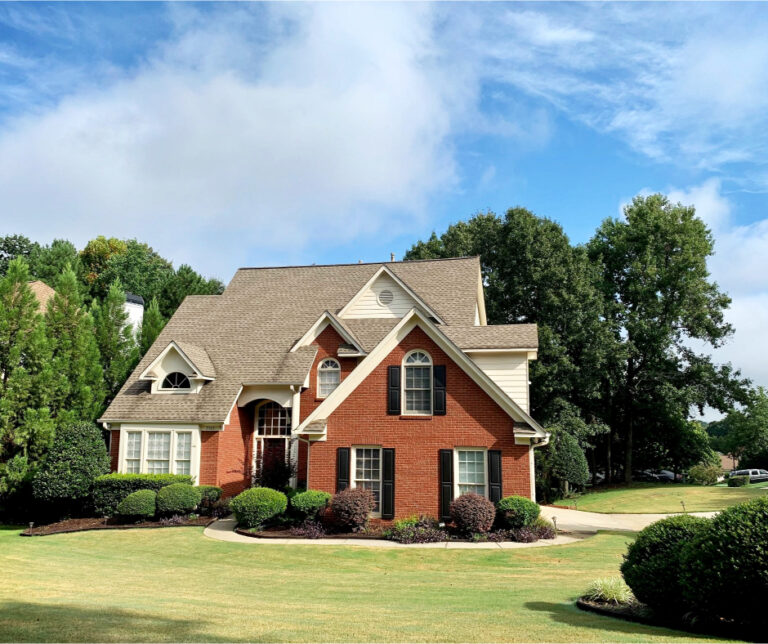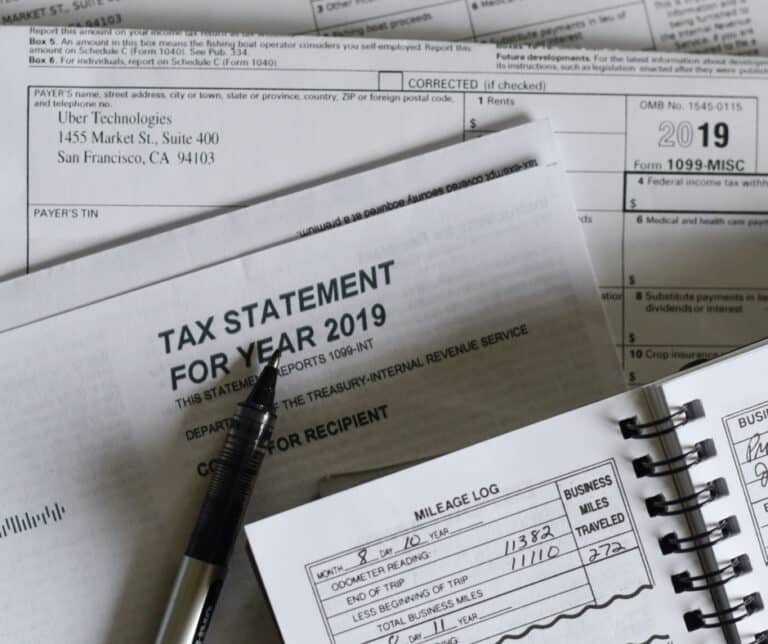2-To-4 Unit Multi-Family Mortgage Guidelines
This guide covers the breaking news on the downpayment requirement on 2-to-4 Unit Multi-Family mortgage loans and the eligibility requirements to purchase a two-to-four-unit multi-family home. Fannie Mae lowers the down payment requirement on a two-to-four-unit multi-family primary home to a 5% down payment from the previous 15% to 25% down payment requirements,
Fannie Mae 5% down payment on two-to-four unit multi-family homes on conventional loans will take effect on November 18th, 2023.
We will cover the various mortgage loan options on two to four-unit homes and the best option for owner-occupant 2-To-4 Unit Multi-Family Homes. Many potential homebuyers who want to start investing in real estate can purchase a 2-To-4 Unit Multi-Family home as an owner-occupant home and be eligible for another owner-occupant single-family home one year later. We will cover these topics in the following sections of this 2-To-4 Unit Multi-Family Mortgage Guidelines mortgage guide.
Buying a 2-To-4 Unit Multi-Family Home As An Owner-Occupant Home
A multi-family home is generally purchased to build an income. Because people will always need a place to live, owning a real estate property as an investment is considered a stable asset. A multi-family property is also passive income, as it can generate money without much intervention from the owner. This is a recurring monthly income. Although there will be maintenance costs, it is generally one structure, so the maintenance is more condensed than if you owned four individual properties.
What Are 2-To-4 Unit Multi-Family Homes?
In this section, we will discuss and cover a multi-family home. A multi-family home is a private structure where more than one family lives. These homes are generally either duplexes, multi-family units, or commercial properties. A duplex is a home with two units sharing the same structure. A multi-family unit is a building with up to four units. The commercial property would be five or more units, and financing for these properties is a different process. The loan process for commercial properties is more intense and requires more significant down payments.
2-To-4 Unit Multi-Family Mortgage Loan Options
What type of loan can be used to purchase a multi-family home property? What type of loan you can use to finance a multi-family home depends on whether or not you plan to live in one of the units. If you live there, you can choose between conventional financing, VA loans, and FHA loans. Below are some examples of Multi-family mortgage programs. It will also make a difference in your purchase of multi-family property. There are restrictions on how many units will qualify for certain loans.
2-To-4 Unit Multi-Family Mortgage Guidelines For Conventional Loans
Conventional mortgage for Multi-Family Property: A conventional loan falls under the regulations of Fannie Mae and Freddie Mac. This type of loan would be for owner-occupants and investors. The application process for a mortgage for a multi-family home is similar to a single-family home loan.
Conforming loan limits on conventional loans on single-family homes is typically $726,200, depending on where you live. Homes in high-cost counties with higher housing costs have higher limits.
If you are buying a multi-family property, there are higher limits. The maximum loan limit for two-unit dwellings in traditional median-priced counties is $929,850. The maximum loan limit for three-unit homes is $1,123,900; for four-unit properties, the maximum is $1,396,800. These loan limits do not include areas such as Guam, Hawaii, Alaska, or the US Virgin Islands.
Update on Down Payment Guidelines on Fannie Mae 2-To-4 Unit Multi-Family Mortgage
Breaking NEWS: Fannie Mae announced owner-occupant two-to-four unit multi-family homes lowered the down payment requirement from 15% to a 5% down payment on conventional loans. This is huge where owner-occupant primary homebuyers of two-to-four-unit multi-family homes with only a 5% down payment.
The credit score required for a conventional multi-family loan would be a minimum of 620, a minimum Debt Service Cover Ratio (DSCR) of 1.25, and six to twelve months of cash reserve.
A conventional mortgage will allow you to get single-family multiunits with up to 4 units and multi-family units of up to 5. With a conventional loan, they could strictly be investment properties or properties that are also owner-occupied. With a conventional loan, homebuyers of multi-family homes can expect to pay a larger down payment, typically between 15% -30%, depending on the number of units and the loan purpose.
Government-Backed Multi-Family Financing
HUD/FHA Loans 2-to-4 Unit Multi-Family Mortgage Guidelines: The Federal Housing Authority considers a multi-family home property with five or more units. This means a buyer can purchase a home with up to 4 units. This means the terms are the same as a single-family unit, which will come with lower interest rates and a lower down payment (compared to a multi-family loan). The property has to be residential and meet the appraisal standards. FHA loans have a specialized set of criteria to get their backing for the loan.
FHA Loans To Finance Multi-Family Homes
Additionally, one of the units must be owner-occupied. To qualify, you will need to meet the standard FHA requirements. Your credit score for an FHA loan must be 580 or above. If you have experienced a foreclosure, you must wait three years. Regarding the Debt-to-Income Ratio, you will need 45% or less. However, the higher your score, the higher your DTI can be in most cases.
HUD 2-to-4 Unit Multi-Family Mortgage Guidelines
The best HUD (Housing and Urban Development) loans for multiunit properties include the 223f Multi-family loan and the FHA (a) (7) Streamline refinance loan. The 223f Multi-family loan is for purchases of multi-family properties that have been around for at least three years. The stipulation is that the property is in good condition. You can have up to 85% Loan to Value, and the maximum amortization and terms are 35 years.
FHA 223(a)(f) Streamline Streamline Refinance Mortgage Loans
The FHA 223 (a) (f) Streamline Refinance is for multi-family and health care loans already existing HUD Loans. This loan will allow you to refinance an existing HUD Commercial loan with better rates and terms. The maximum loan size is the original mortgage or the balance of the HUD loan, along with loan expenses and repairs. These two loans come with a fixed interest rate, and you can qualify for a 35-year fixed term.
2-To-4 Unit Multi-Family Mortgage Guidelines For Commercial Loans
A commercial mortgage is for business rather than residential. These are considered high-risk loans, and there will be higher interest rates. These are for complexes or single buildings with at least five separate units. You can use these loans to purchase, develop, construct, or renovate multi-family real estate.
Qualifying For Investment Property Mortgage Loans
An example of a commercial loan is the Freddie Mac Commercial Multifamily loan. This loan is for an Apartment/multi-family and is best for properties in large cities. The loans go up to 80% LTV, and rates can be fixed from 5-10 years with a 30-year amortization. The minimum credit requirement is 660. The maximum loan size is $1 Million. You will need to have 9-12 months of post-closing cash.
2-To-4 Unit Multi-Family Mortgage Guidelines For VA Loans
The Veterans Association requires you to live in one of the multi-family units. They describe a multi-family unit as a single building that houses 2-4 separate units for different families. The Veterans Association doesn’t require a downpayment if you have enough VA entitlement. No Mortgage insurance is required on this loan.
VA Join Mortgage Loan Option
Additionally, the VA has a program where “Joint Loan” options allow two or more veterans to purchase a multi-family home with up to seven units. To take advantage of the VA Multi-family loan program, you must meet the military requirements and qualify based on your credit scores (At least 620), income, and a total debt-to-income ratio of 41%. In general, the Veterans Administration does not have a minimum credit score requirement:
Two-to-four-unit multi-family homes require cash reserves. Homebuyers need to have cash reserves to cover three to six months of mortgage payments. Number of months of reserves depend on the number of units the borrowers is buying.
You must plan to move into the property within 60 days of closing while remaining there for at least a year. The VA will require you to prove that you have managed a rental property before or have hired a property management company to qualify. Additionally, you may be able to count up to 75% of the verified rent as income.
Short-Term Bridge Loans To Finance Fix and Flip Multi-Family Properties
A Bridge Loan is a short-term loan, typically less than two years. You buy a property, renovate the property, and then refinance the loan into a regular mortgage. Because these bridge loans are not standard mortgages, they are not restricted by regulations or requirements of mortgages. This type of loan is considered a private loan and is often used for purchasing properties that would not be eligible for traditional financing.
Using Rental Income To Qualify For 2-To-4 Unit Multi-Family Mortgage Loans
Can you use rental income to qualify for a loan? Lenders generally want to see signed leases to use the projected rental income from additional units to count the income from renting towards qualifying for a loan. Additionally, about 25% of the revenue from the rentals will be deducted to account for vacancies and maintenance. The documentation you can provide would be a current lease, an agreement to lease, or at least two years’ worth of consistent rent history. So, if you plan on buying a vacant property with no rental history, this could be a problem.
Private Mortage Insurance on 2-To-4 Unit Multi-Family Mortgage Loans
Investment properties do not typically qualify for Private Mortgage Insurance (PMI), so lenders usually require 25-30% down due to the increased risk. Getting pre-approved for any loan is essential, even more so for a multi-family home. You should contact a loan officer to find out what is required. This will give you an idea of what you are qualified for and your budget.
2-To-4 Unit Multi-Family Mortgage Guidelines Credit Requirements
When financing a multi-family unit, just like any home purchase, you must be aware of your credit health. Because the requirements can be stricter with buying a multi-family home, you will need to preplan and correct any issues with your credit report. There are three major credit bureaus. They are Equifax, Experian, and TransUnion. Several things affect your score.
Preparing Credit Before Applying For 2-to-4 Unit Multi-Family Home
A credit report considers the types of credit and loans, the time you have had the loans and your payment history. Your debt to credit utilization is how much a person has on their credit card divided by how much available credit you have on that account. Generally, lenders look for utilization of less than 30%.
2-To-4 Unit Multi-Family Mortgage With Bad Credit
If you have had delinquent payments, it will show up on your credit report. You can contact the lender to inquire about catching up if this happens. Late or missed payments on your bills are the number one factor in a low credit score. If you see inaccuracies on your credit report, you can dispute them through the credit bureau. This may signal an error or identity theft.
Rebuilding Your Credit and Boosting Your Credit Scores For Best Rates
Although correcting issues on your report takes time, it is worth it, especially when you plan on an investment property. Most lenders consider a credit score of 620 acceptable for most mortgages, but it can be higher for an investment property. It depends on what lender and type of loan you have. Most borrowers have a credit score of around 750. In many cases, it is essential to remember that the lower your credit score, the higher your interest rate.
2-To-4 Unit Multi-Family Mortgage Guidelines on Debt-to-Income Ratio
Your Debt to Income (DTI) Ratio is the percent of your gross monthly income that goes towards paying your monthly bills ]compared to your income. This includes homeowner’s insurance, student loans, car payments, monthly mortgage payments, and minimum credit card payments. The typical debt-to-income ratio for a mortgage is 43%; however, lenders often want to see a better percentage when purchasing a multi-family property.
2-To-4 Unit Multi-Family Mortgage Guidelines on Down Payment
The down payment for a multi-family mortgage was higher on conventional loans. Fannie Mae multi-family owner-occupant homes required a 15% down payment. However, Fannie Mae lowers the down payment requirement on two to four-unit multi-family owner-occupant homes to a 5% down payment. Fannie Mae multi-family guidelines on investment properties remain unchanged at 20% to 25%. Investment property two-to-four-unit multi-family homes do not require private mortgage insurance since a minimum of a 20% down payment is required. Lenders consider higher risk on investment properties.
Applying 2-To-4 Unit Multi-Family Homes
Once you have taken the time to look over and correct any credit issues and get preapproval, you can apply! The application process for buying a multi-family home is very similar to your primary residence but with more requirements. You will need a real estate agent to assist and advocate for you. Once your agent has helped you find your multi-family property, you will make an offer. Once the offer is accepted, you must have an appraisal and inspection.
2-To-4 Unit Multi-Family Mortgage Guidelines on FHA and VA Loans
The VA and FHA have additional requirements they are looking for during the inspections. A home appraisal will ensure that the house is priced right, based on the area, the home itself, and the market value of other homes. The home inspection is based on the physical house and is more detailed.
The Importance of a Home Inspection When Buying Two-To-Four-Unit Multi-Family Homes
This is when any issues come to the front, and it is for the buyer’s and lender’s protection. This way, any problems can be fixed before closing. It usually takes about 30-40 days to close, sometimes longer if there are any snags. The closing costs and a down payment associated with a multi-family home are generally higher than those of a primary one-family home. Although buying a multi-family home can come with stricter guidelines and more risk for lenders, there are plenty of options for buyers who want a reliable income. If you do your homework and look for lenders with the best products for your needs and circumstances, you can be a multi-family investment homeowner!








Would like to fund upgrades on 4 unit rental property, wholly owned, no debt in Fort Plain, NY